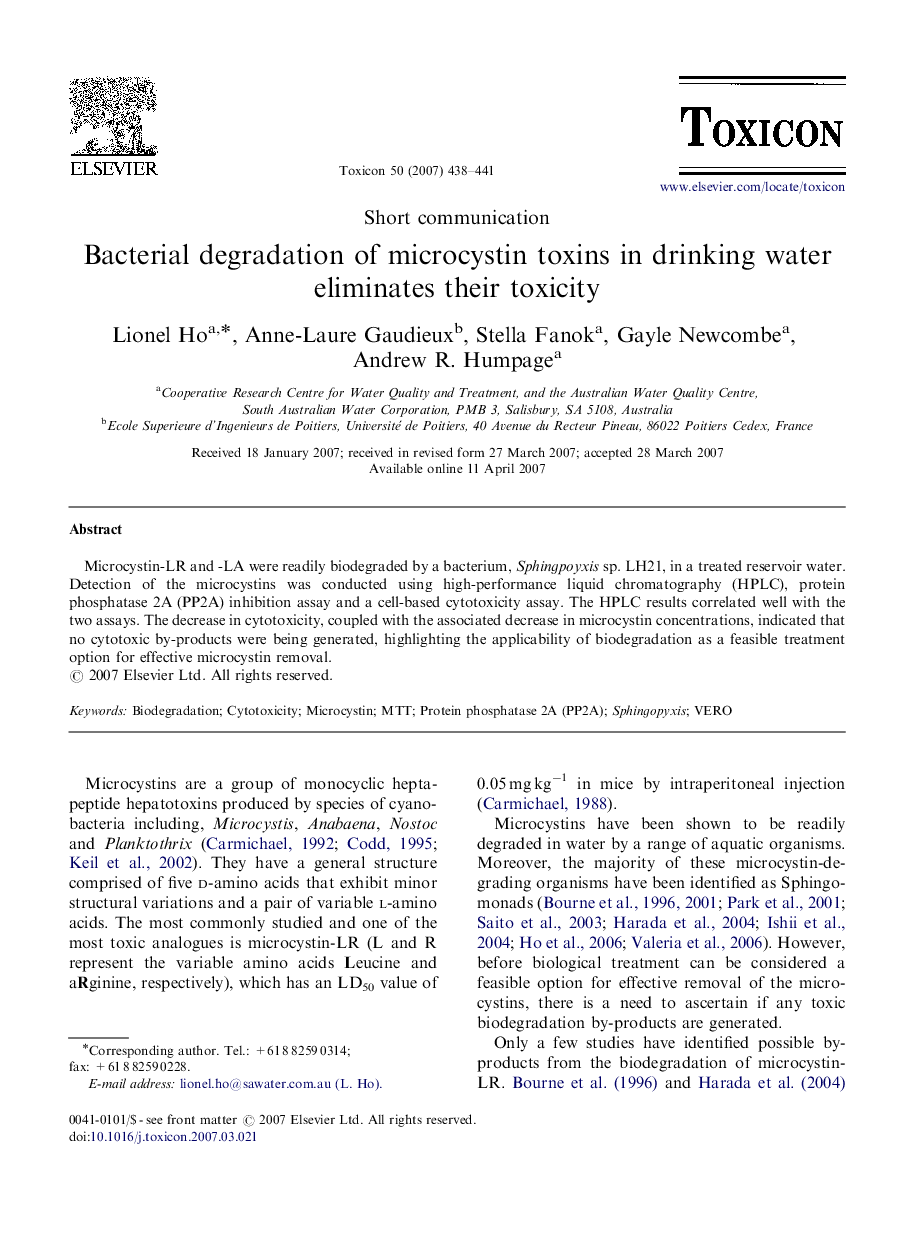| Article ID | Journal | Published Year | Pages | File Type |
|---|---|---|---|---|
| 2066036 | Toxicon | 2007 | 4 Pages |
Abstract
Microcystin-LR and -LA were readily biodegraded by a bacterium, Sphingpoyxis sp. LH21, in a treated reservoir water. Detection of the microcystins was conducted using high-performance liquid chromatography (HPLC), protein phosphatase 2A (PP2A) inhibition assay and a cell-based cytotoxicity assay. The HPLC results correlated well with the two assays. The decrease in cytotoxicity, coupled with the associated decrease in microcystin concentrations, indicated that no cytotoxic by-products were being generated, highlighting the applicability of biodegradation as a feasible treatment option for effective microcystin removal.
Related Topics
Life Sciences
Biochemistry, Genetics and Molecular Biology
Biochemistry, Genetics and Molecular Biology (General)
Authors
Lionel Ho, Anne-Laure Gaudieux, Stella Fanok, Gayle Newcombe, Andrew R. Humpage,
